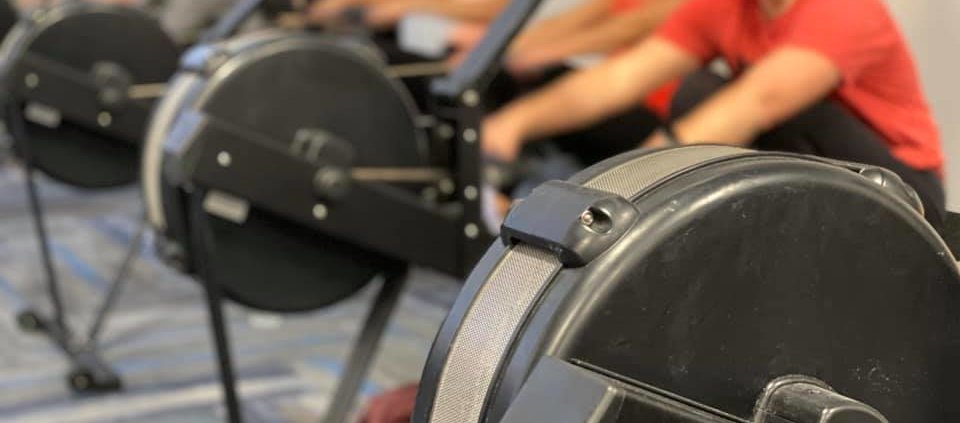Why We Row For Calories vs. Meters
Whether you have been at CPM for a short amount of time or since the beginning, you’ve likely experienced both row for cals and row for meters during the workouts.
Why do we do one over the other?
Personally, I love to row for meters. When rowing for calories, it seems to take to so long just to get one stinking calorie! (Maybe if I had my husband’s genetics, I would feel differently!)
Why Calories & Meters Matter
In workouts where weightlifting and gymnastics movements get combined in unique ways, it matters very much if the workout is written for calories or meters. The pace, transitions, and overall strategy of a workout should completely change depending on whether the workout is calories or meters.
The faster you row for calories, the fewer meters you must row. For example:
- 15 calories at 2:30/500m pace is 1:22 and 274 meters
- 15 calories at 2:00/500m pace is 0:45 and 204 meters
- 15 calories at 1:30/500m pace is 0:28 and 154 meters
Therefore, it pays to row faster if the units are calories, and it often doesn’t pay to row faster if the units are meters.
Improve Your Calorie Rowing
Here are some great cues and pro tips to get better at calorie output on the rower.
Its All in the Legs
When you’re all the way forward on your row stroke, think of that extension as a leg drive, as opposed to an arm pull.
The drive through the legs should be so forceful against the rower so that you can almost feel your butt pop up off the seat!
Just like you wouldn’t yank a deadlift off the ground with your arms, you need to initiate your movement on the rower with your legs. Your arms are simply there to guide that handle to your chest as you drive through the extension.
Grip for Rowing
Keep a loose grip, and a loose upper body.
You have often been cued in running to relax your hands and not clench them into fists. Tension in the upper body is not only a waste of energy, but it also leads to improper positioning through the stride. The same theory applies to your grip and upper body on the rower. It is completely unnecessary to grip for dear life!
It is far more beneficial to have a relaxed grip on the handle. In addition to a relaxed grip, it is also important to keep the shoulders and arms loose as well. If the arms are already tensed up, we are much more likely to revert to an upper pull than a lower-body drive.
Hip Hinge in Rowing
This next point is a big “Aha!” moment for a lot of people.
When you have fully extended, think “butt back first”. Before the recovery is initiated, the seat should actually slide back just slightly before it begins to slide forward.
Recovery in Rowing
This motion is similar to the hinge pattern you see in a hang clean; it even serves the same purpose! Pushing your butt back first loads the hamstrings through the recovery, which sets you up for a powerful and explosive drive.
Now you have the tools and tricks to make your next rowing workout your best one yet!
Keep Learning the Fundamentals With CPM
Our expert coaches are always here to teach Sioux Falls members how to live a fit and healthy life. Explore more of our educational posts here on the CPM blog.




